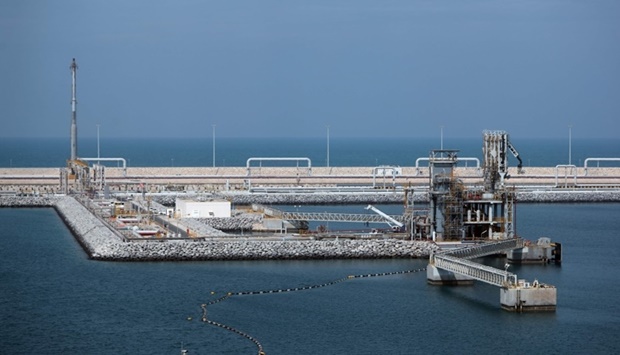Qatar’s GDP growth will gain speed at 3.7% in 2022 and 3.5% in 2023-24, according to researcher Oxford Economics.
The researcher estimates Qatar’s economy will gave grown by 2.5% in 2021.
In its forecast overview, Oxford Economics said domestic activity has gained strength since (pandemic-induced) restrictions were eased.
The manufacturing PMI reached 63.1 in November 2021, up from 62.2 in October last year, signalling the strongest improvement in business conditions in the series’ history, with both output and new orders trending up amid improving confidence.
But although recovery appears broad-based, Oxford Economics said the spread of Omicron means near-term downside risks have risen. Like many countries, Qatar tightened travel restrictions after the new variant came to light. In October, the authorities made booster vaccines available to everyone.
Recent GDP data shows the economy continued to rebound in Q2, despite tighter restrictions, with annual growth of 4% on the back of a 6.2% y/y surge in the non-oil sector.
The outcome partly reflects supportive base effects, but activity was 0.6% higher than in Q1. The reopening of the economy began at end-May.
As a result, Oxford Economics maintains its 2021 GDP forecast for Qatar at 2.5% and expects the economy will have recovered, with output reaching its pre-pandemic level in Q4 last year.
It will then continue to expand steadily supported by higher spending, ongoing outlays ahead of the 2022 FIFA World Cup and rising gas production. GDP growth is seen at 3.7% in 2022, and then 3.5% in 2023-24, Oxford Economics said.
Key factors behind Oxford Economics’ near-term projections include the country’s priority for the gas sector. It said the lifting of the moratorium on North Field gas projects will have a positive impact and plans to increase LNG capacity by almost 65% to 126mn tonnes per year (tpy) by 2027 from 77mn tpy remain on track.
Prior to the emergence of Omicron, Qatar’s growth momentum was strong, the researcher noted.
The November PMI rose to 63.1, an all-time high, boosted by a record improvement in output and new orders. Firms reported larger work backlogs despite a rise in the employment component, implying that recovery in the labour market continues after weakness earlier in the year, Oxford Economics said.
The researcher estimates Qatar’s economy will gave grown by 2.5% in 2021.
In its forecast overview, Oxford Economics said domestic activity has gained strength since (pandemic-induced) restrictions were eased.
The manufacturing PMI reached 63.1 in November 2021, up from 62.2 in October last year, signalling the strongest improvement in business conditions in the series’ history, with both output and new orders trending up amid improving confidence.
But although recovery appears broad-based, Oxford Economics said the spread of Omicron means near-term downside risks have risen. Like many countries, Qatar tightened travel restrictions after the new variant came to light. In October, the authorities made booster vaccines available to everyone.
Recent GDP data shows the economy continued to rebound in Q2, despite tighter restrictions, with annual growth of 4% on the back of a 6.2% y/y surge in the non-oil sector.
The outcome partly reflects supportive base effects, but activity was 0.6% higher than in Q1. The reopening of the economy began at end-May.
As a result, Oxford Economics maintains its 2021 GDP forecast for Qatar at 2.5% and expects the economy will have recovered, with output reaching its pre-pandemic level in Q4 last year.
It will then continue to expand steadily supported by higher spending, ongoing outlays ahead of the 2022 FIFA World Cup and rising gas production. GDP growth is seen at 3.7% in 2022, and then 3.5% in 2023-24, Oxford Economics said.
Key factors behind Oxford Economics’ near-term projections include the country’s priority for the gas sector. It said the lifting of the moratorium on North Field gas projects will have a positive impact and plans to increase LNG capacity by almost 65% to 126mn tonnes per year (tpy) by 2027 from 77mn tpy remain on track.
Prior to the emergence of Omicron, Qatar’s growth momentum was strong, the researcher noted.
The November PMI rose to 63.1, an all-time high, boosted by a record improvement in output and new orders. Firms reported larger work backlogs despite a rise in the employment component, implying that recovery in the labour market continues after weakness earlier in the year, Oxford Economics said.


